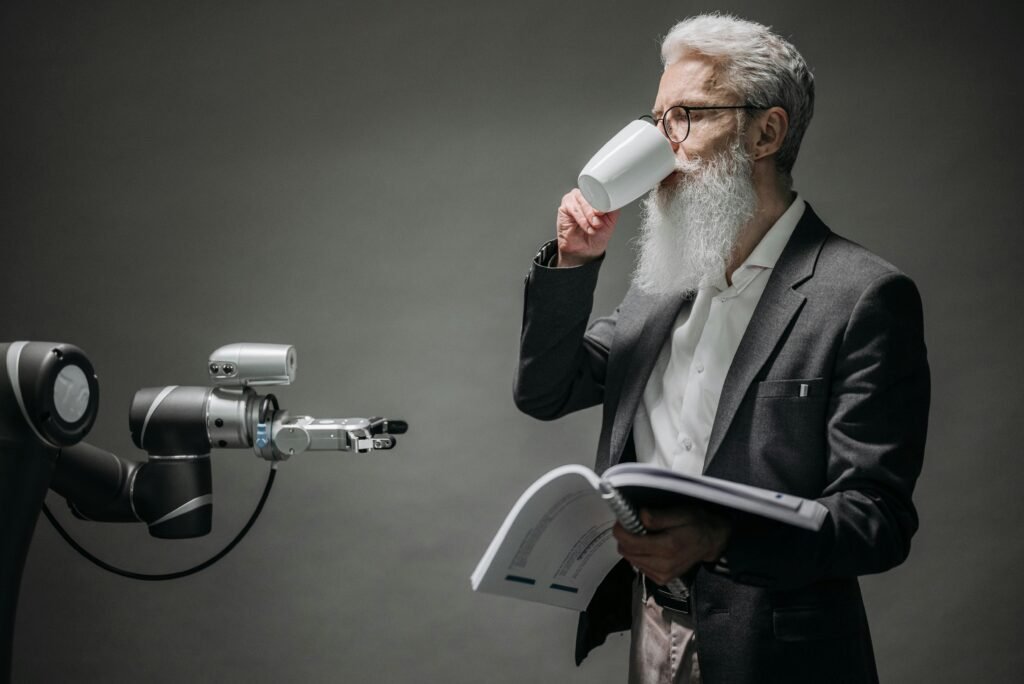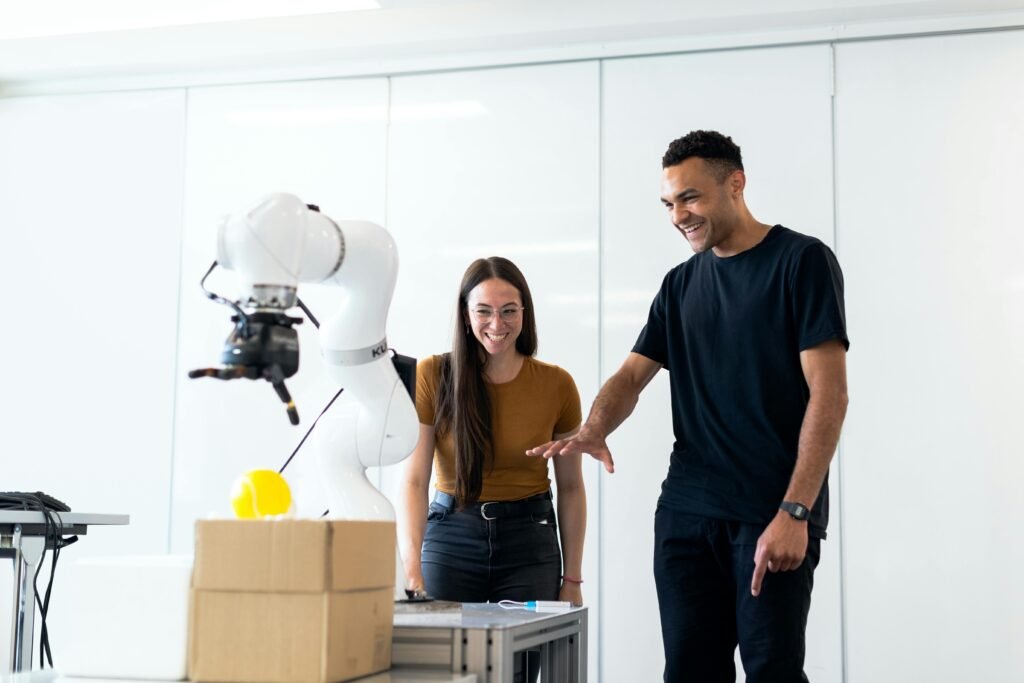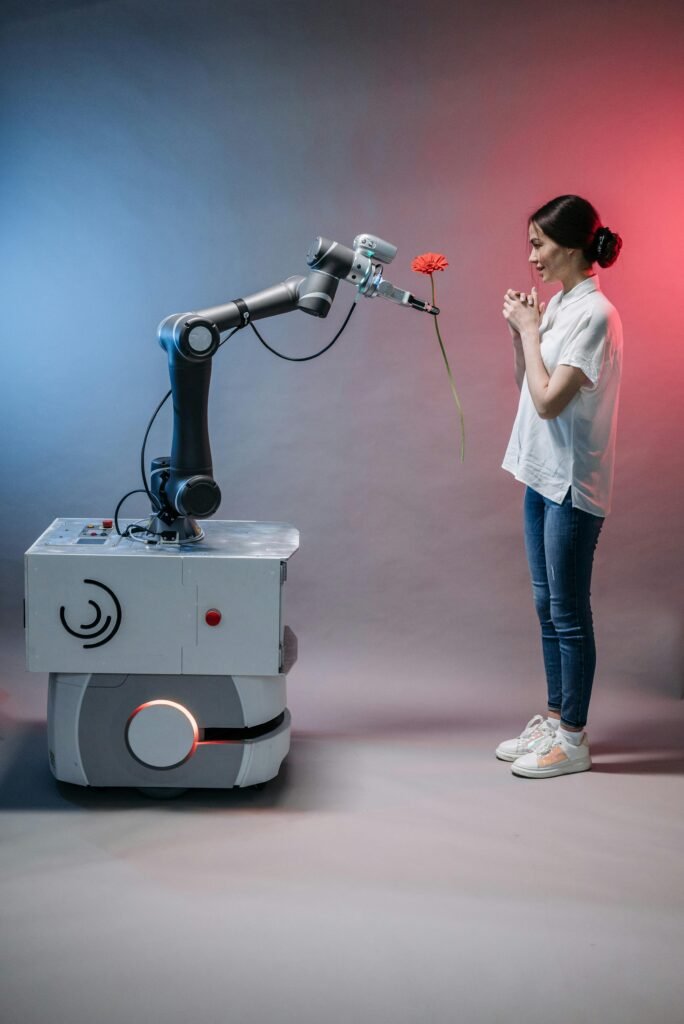
Introduction

In recent years, AI and automation have become disruptive forces that are changing the way business is done around the world. Notably, an increase in efficiency, productivity, and innovation has given rise to transformations in workplace dynamics. This blog looks at how AI and automation are changing the future of work, the advantages, and the challenges associated with them.
Rise of AI and Automation
Artificial Intelligence (AI) is defined as human intelligence multi-dimensionally programmed into machines, allowing those machines to perform tasks often performed by people either through learning, reasoning, or solving problems. Automation refers to the use of technology to complete assignments without human intervention. Some of the tasks involved are very complex and will benefit from the combination of AI and automation. check this link out
Prominent Applications of AI and Automation
Manufacturing: In the manufacturing sector, AI robots and automation systems have achieved smoother production lines, waste reduction, and enhancement of quality. Smart factories use AI to predict maintenance needs by considering when they will be required besides avoiding equipment failure to keep production going.
Healthcare: AI and automation are remaking healthcare by enabling rapid diagnosis, customized treatment, and improved patient care. AI algorithms can analyze medical data for time-equivalent patterns with the possibility of predicting an outbreak of diseases, while robotic systems assist in surgeries and mundane tasks.
Finance: In the financial industry, application of AI and automation has made possible fraud detection, risk assessment, and customer service. Automatic trading systems study the current market trends to execute trades as warranted while AI chatbots offer 24/7 customer support.
Retail: Retailers use AI and automation to personalize shopping experiences, manage stocks, and streamline the supply chain. AI recommendation systems analyze past customer data to suggest a product, while the state of the art here is automated checkouts.
Benefits of AI and Automation

Increased Efficiency: AI and automation save lots of time and energy while executing tasks, leading to increased productivity and efficiency in the usability aspect.
Cost savings: By automating repetitive tasks, companies can lower the costs of labor and redirect resources towards more strategic activities.
Improved accuracy: AI algorithms and automated systems eliminate human error, ensuring the same accuracy and quality.
Innovation: AI techniques and automation help foster innovation by creating new business models, products, and services.
Challenges and considerations: While AI and automation present factors offering advantages, they equally raise challenges needing solutions.
Job removal: Displacing a task from a human worker and assigning it to an automation tool will likely lead to job removal requiring retraining and fostering a different type of relationship with work. find out more about
Ethical: The ethics of AI raises many questions such as privacy, bias, responsibility, and demand for creation of an ethical guideline on responsible AI use.
Integration: Implementing AI and automation, there has been a rise in investment mostly focused on the technological aspects, and joining/returning these together in the industry must be securely detailed in terms of providing optimum output.
AI in Industry

In different industries, the unmistakable influence that AI is making is transforming existing operations and creating a new realm of potential innovation and efficiency. Let us now consider a few selected areas:
Manufacturing
Predictive Maintenance: In predictive maintenance, machines are monitored using AI algorithms that analyze data to predict when malfunctions will happen and therefore minimize downtime costs and maintenance costs.
Quality Inspection: They assist with offering machine-learning and computer-vision solutions by reducing certain defects in products with more accuracy than human inspectors.
Supply Chain Optimization: In this domain, AI optimizes supply chains, predicting the needs of clients, inventory management, and enhancing logistics.”
Healthcare
Diagnostics: AI programs assist medical practitioners by analyzing medical images and patients’ data to early and accurately diagnose diseases.
Personalized Medicine: AI customizes treatment based on individual patients, taking into consideration their genetic makeup, lifestyle, and medical history.
Robotic Surgery: Robotic surgery should be understood as in this, the AI in it performs surgical procedures by using less practice and causes less bleeding.
Finance
Fraud Detection: AI monitors transactions, patterns, and irregularities in real time and flagged for fraud when detected.
Algorithmic Trading: Trading has long been automatic; since it has always been AI-modulated with algorithms that have taken the stock market-determined data and trends quite a long time ago, they usually beat traditional human traders.
Customer Service: AI 24 hours Chatbot helps to resolve a customer’s queries or problems. read more
Transport
Self-driving Car: AI is the backbone behind driving the development of self-driving cars or trucks which are supposed to make transportation safer and more efficient.
Route Optimization: Route optimization by delivery days is being executed by AI algorithms by minimizing fuel consumption and delivery times.
Predictive Maintenance: Just as in manufacturing, AI predicts maintenance input for vehicles leading to less downtime of use.”
Agriculture
Precision Farming: Airing with data shared with the use of sensors and satellites to optimize irrigation, fertilization, and the actual need for pest control will help raise crop yields.
Crop Monitoring: AI-powered drones and robots also monitor the health of the crops, providing early diagnosis of any problem and allowing immediate intervention.
Supply Chain Optimization: The assistant optimizes the supply chain in the agriculture sector, from farm to market, reducing waste and improving efficiency.
Energy

Smart Grids: AI to manage and optimize distribution of energy, balancing supply and demand in real-time.
Predictive Maintenance: AI predicts possible failures at the power plants and over the power grid, which reduces downtime and maintenance costs.
Energy Efficiency: AI studies patterns of consumption in order to suggest where cuts may be made in energy use and cost.
Conclusion:
AI and automation will revolutionize the future of work, marking a shift among industries by improving productivity and innovation alike. Although such challenges arise simultaneously, there also abound great gains to obtain even as workers and businesses settle down into this new reality. The maximum performance to be gotten, in a nutshell, depends on properly anticipating what change entails, properly moved toward investing in skill build-up, and cautionary integrated and ethical application.
AI is creating revolutions in industries, thereby increasing efficiency, decreasing costs, and giving rise to innovations. The potential in this widely accepted technology is vast and diverse. Indeed, with increasing technological developments, the potential of change across industries is bound to be even greater in the future.



